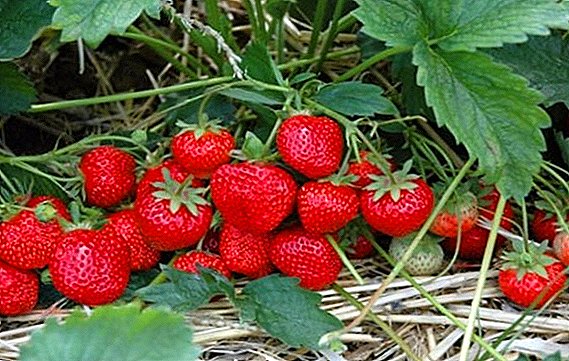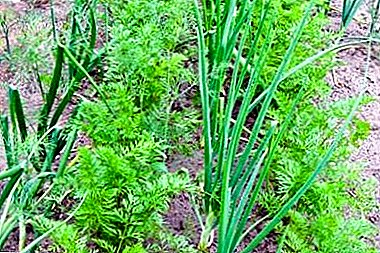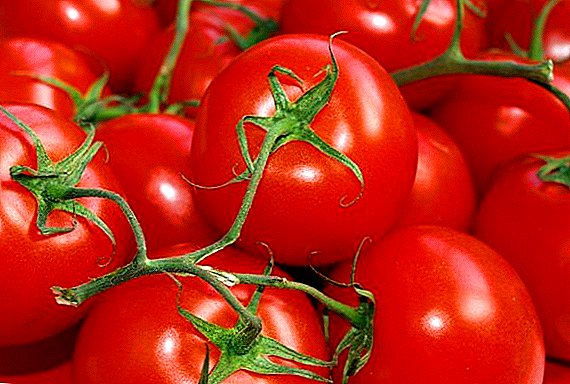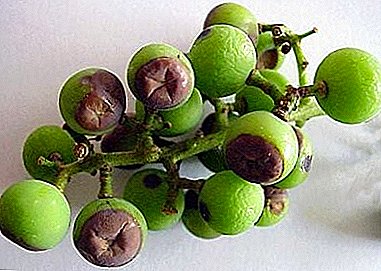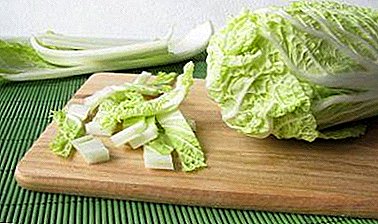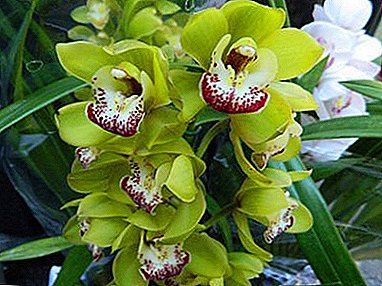 What is pepino is such a question, probably, every person asks when he hears this name. In this article we will talk about this interesting plant, and also find out the basic principles of planting and caring for pepino in the country.
What is pepino is such a question, probably, every person asks when he hears this name. In this article we will talk about this interesting plant, and also find out the basic principles of planting and caring for pepino in the country.
Pepino - what is this plant
Pepino, better known as melon pear, - evergreen shrub from the nightshade family, originally from South America. Great interest in this plant appeared in the 80s of the last century. Today, there are 25 varieties of pepino. For our climate, the varieties "Ramses" and "Consuelo" are bred. Fruit pepino, or melon pear looks like a melon or pumpkin, has a rather tasty fruit. Pepino tastes like a sour melon, which is given in its vitamin C.
Did you know? The first mention of pepino was still in 1553.
Features of cultivation, conditions for melon pear
Pepino, or melon pear - very capricious plant, growing and caring for them at home is painstaking work. Pepino is grown from seeds and cuttings. When growing it is very important to cut off extra branches, if it is not done, the plant produces almost no fruits. Repeat this procedure weekly. The plant pepino (or melon pear) loves light, it suits the same diet that you use when growing eggplant.
Did you know? Pepino is 92% water, which makes it so juicy.
How to choose a place for growing, lighting
For pepino, it is necessary to choose a well-lit, ventilated place with a low humidity level, as the plant tolerates sudden changes in humidity. The optimum temperature for a plant during the day is about 22 ° C, the temperature above 30 ° C can adversely affect pepino, the night temperature should not be lower than 18 ° C - the color may fall.
Soil for planting
Pepino requires for the cultivation of the soil, which must be neutral, not rich in nitrogen, causing a strong growth of the stem at a loss of fertility. It also complicates its protection against parasites. Soil temperature should not be higher or lower than 20 - 22 degrees.
How to plant pepino, melon pear breeding
The melon pear is propagated in two ways: from seeds and grafting. But nevertheless it is better by cuttings, because not every variety produces full-fledged seeds, and pepino grown from seeds later bear fruit.
Growing from seed
 Melon pear seeds do not all germinate, and even in special conditions, it is about 50% in Ramses and 80% in Consuelo. As early as November or December, it is possible to germinate seeds - in a flat vessel with a tight lid, covering the bottom with moistened filter or toilet paper. A closed container must be kept at a temperature not higher than 28 degrees. Seeds begin to hatch already a week later and up to a month after being placed in a container.
Melon pear seeds do not all germinate, and even in special conditions, it is about 50% in Ramses and 80% in Consuelo. As early as November or December, it is possible to germinate seeds - in a flat vessel with a tight lid, covering the bottom with moistened filter or toilet paper. A closed container must be kept at a temperature not higher than 28 degrees. Seeds begin to hatch already a week later and up to a month after being placed in a container.
When the seeds peel off, pepino can be dived into a pot or tray with light soil, and they also need constant light. A month later, the backlight is reduced to 16 hours and in another month to 14 hours. And only in the middle of February you can switch to natural light. Pepino is planted in open ground in mid-April or early May, in order to avoid frost. Seedlings are planted in moist soil at a distance of about 50 cm from each other, sprinkled with dry earth, this should be done in the afternoon.
Still, to avoid frost over the seedlings, they stretch the film; if there is a drop under the film, drip irrigation can be carried out. When the temperature rises, one of the sides of the film can be opened for ventilation.
Cuttings
 In a month-old seedling it is already possible to break off cuttings and root them, preferably in peat, without hiding them. For better rooting, you need to take cuttings with 8 leaves. It is noted that Pepino cuttings root very well.
In a month-old seedling it is already possible to break off cuttings and root them, preferably in peat, without hiding them. For better rooting, you need to take cuttings with 8 leaves. It is noted that Pepino cuttings root very well.
Cuttings also reproduce: habitat capricoleum, plumeria, zamiokulkas, Chinese juniper, diploadiya, bilberry, plum and korie.
How to grow in the country, the rules of care
It is necessary to care for a melon pear as well as for tomatoes. The most important in the care of pepino are: airing the greenhouse, removing stepsons, tilling the soil and getting rid of weeds, watering as needed, top dressing.
Features of watering plants
 Watering melon pears - moderate, in no case pereuvlazhnyat. To avoid decay and disease, the greenhouse must be aired. To reduce irrigation and preserve the substrate, the soil must be mulched with fresh straw or sawdust - this also helps against weeds.
Watering melon pears - moderate, in no case pereuvlazhnyat. To avoid decay and disease, the greenhouse must be aired. To reduce irrigation and preserve the substrate, the soil must be mulched with fresh straw or sawdust - this also helps against weeds.
Soil care
Pepino likes a light and prolific soil with a slight acidity. It is better to plant a melon pear in places where legumes, onions, and cucumber have previously grown. After they are harvested, the soil is loosened, weeds are harvested, dug and fertilized with manure, which is well decomposed with compost.
Important! Pepino can not be planted where they grew tomatoes or potatoes - they are affected by the same diseases and pests.
Garter
 It is necessary to tie up and form a pepino bush within a week - two after planting. The stalks are tied up as the plants grow, the fruits are not tied to the trellis - they can be simply hung.
It is necessary to tie up and form a pepino bush within a week - two after planting. The stalks are tied up as the plants grow, the fruits are not tied to the trellis - they can be simply hung.
Feeding melon pear
Feed the melon pear every month. For the first time, they feed up two weeks after planting in the ground, a second time - after the first cutting of the stepsons, and then every two or three weeks. The plant responds well to fertilizing from manure or bird droppings, but it contains a lot of nitrogen, therefore we keep the proportions: 1: 6 for manure, 1:20 - droppings.
Important! Uncoupled bushes without circumcision under their weight fall on the ground and bear bad fruit.
Pest and disease protection
The melon pear is affected by the same diseases and pests as tomatoes, therefore the prevention of diseases is the same. The main pests are Colorado potato beetle, whitefly, aphid; ripe fruits are very fond ants
It is also interesting to read about the most common garden pests: bark beetle, granary weevil, spider mite, mice, shrew, nematodes, wireworm, hermes, earwig and apple moth.


Harvesting melon pear
You can collect fruits from a plant when they reach 10–12 cm and become pale yellow, cream-colored. Fruits do not sprout at the same bush at the same time, so the harvest should be harvested several times during the season.
How to save a plant in winter
Pepino has a dormant period, and this allows you to save the plant for next year. During this period, watering is minimal, no light is needed at all, the temperature is gradually reduced to 6 degrees. The plant sheds leaves and can now be stored. about two months but no more.
To have cuttings next year, pepino bushes pruned in the fall by 1/3 and transplanted into a bucket, etc.
At the end of February, the number of waterings is increased and the temperature is raised to 16 ° C. The resulting buds are cut, and the cuttings are carefully separated and transplanted into the substrate. For better rooting, the cuttings are placed in a greenhouse with a humidity of about 90%.
Melon pear fruits contain a lot of iron, carotene, vitamins C, PP, group B. They even contain a lot of sugars, but they are easily digested, which makes pepino interesting in terms of cultivation, as well as tasty and healthy.



